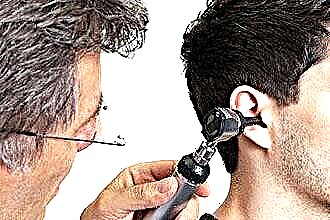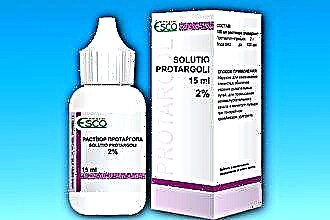Subatrophic rhinopharyngitis is one of the most common types of inflammation of the larynx, in which negative changes occur on its mucous membrane under the influence of external or internal factors. The disease responds well enough to acute treatment. However, if you start it, it quickly becomes chronic and then it can be present in a sluggish form for years, aggravating at every opportunity.
The main reasons
 A feature of subtrophic rhinopharyngitis is that it can form hard crusts on the mucous membrane of the larynx, destroying the capillaries and provoking severe swelling of the mucous membrane. All this is precisely the result of atrophic changes in soft tissues. Many factors can provoke the disease. It is impossible to list all of them, so here we will highlight only the main ones:
A feature of subtrophic rhinopharyngitis is that it can form hard crusts on the mucous membrane of the larynx, destroying the capillaries and provoking severe swelling of the mucous membrane. All this is precisely the result of atrophic changes in soft tissues. Many factors can provoke the disease. It is impossible to list all of them, so here we will highlight only the main ones:
- Untreated ARVI. The constant presence of viruses in the nasopharynx provokes inflammatory processes leading to undesirable changes in the mucous membrane.
- Long-term use of vasoconstrictor drugs. Leads to severe overdrying of the nasal mucosa and its thinning.
- Chronic sinusitis. It is accompanied by a constant flow of pus and mucus into the throat and irritation of the back wall of the larynx.
- Endocrinological disorders. Lead to changes in tissue structure and dryness of the skin and mucous membranes.
- Diseases of the digestive tract. First of all, gastritis with high acidity and reflux, in which gastric juice is thrown into the esophagus with acid belching, irritating the larynx.
- Lack of vitamin A. It also leads to thinning and overdrying of the skin and mucous membranes.
- Fungal diseases. They provoke permanent irritation of the mucous membrane, loosen it, and cause inflammation.
- Contaminated air. Dust and dirt particles settle in the throat, provoking coughing and inflammation.
- Chemical irritants. Including household chemicals, low-quality perfumes, smog can lead to inflammation and erosion of the mucous membrane.
- Unsuitable food. Too spicy, salty, sour, hot, cold, dry - anything that badly affects the delicate mucous membranes of the throat.
Bad habits are also on this list. Basically - this is smoking (and passive as well) and inhalation of toxic substances (drugs, fumes of varnishes, paints, glue, etc.).
Of course, it is advisable to try to identify and eliminate the main causes of the disease even before the start of active treatment, at the stage of passing a diagnostic examination. Otherwise, any measures taken will give only a temporary improvement. Gradually, exposure to irritants will cause re-disease.
The main symptoms
 At an early stage of the disease, pharyngitis manifests itself as irritation and redness of the throat mucosa, constant tickling, discomfort, unproductive cough, that is, symptoms characteristic of colds and SARS. If it is cured in time, then trophic changes in the mucous membrane do not occur.
At an early stage of the disease, pharyngitis manifests itself as irritation and redness of the throat mucosa, constant tickling, discomfort, unproductive cough, that is, symptoms characteristic of colds and SARS. If it is cured in time, then trophic changes in the mucous membrane do not occur.
In the absence of treatment or prolonged exposure to irritants, the mucous lining of the throat becomes thinner, and the disease already has pronounced visual and other symptoms:
- pain when swallowing - caused by the fact that the back wall of the larynx is constantly irritated;
- thinning of the mucous membrane - it even becomes noticeable upon examination, since the capillary network clearly appears through it;
- the presence of thick mucus, with the help of which the body tries to compensate for the drying out of the mucous membrane;
- difficulty swallowing - saliva begins to constantly flow, since due to damage to the nerve endings, the swallowing reflex is disturbed.
Acute pharyngitis is characterized by a sharp increase in body temperature. With an exacerbation of a chronic disease, the temperature may rise slightly, up to 37.2-37.5OC. An accurate diagnosis can only be made based on the results of a diagnostic examination.
Diagnostic methods
The first step in diagnostics is always a visual inspection. Moreover, for an appointment with subatrophic rhinopharyngitis, it is necessary to go not to a therapist, but to an otolaryngologist. Firstly, this is precisely his specialization, and secondly, he has the equipment and tools necessary for conducting a thorough examination.
 At the initial appointment, the doctor listens to the patient's complaints, makes an anamnesis, and then carefully examines the patient's throat with a special mirror, and the nose with the introduction of a rhinoscope. At the same time, mucus is collected from the nose and throat for laboratory research. After examination, the lymph nodes are palpated to identify their possible enlargement.
At the initial appointment, the doctor listens to the patient's complaints, makes an anamnesis, and then carefully examines the patient's throat with a special mirror, and the nose with the introduction of a rhinoscope. At the same time, mucus is collected from the nose and throat for laboratory research. After examination, the lymph nodes are palpated to identify their possible enlargement.
Additional diagnostic methods are used:
- blood tests - general and biochemical;
- pharyngoscopy - hardware examination of the larynx;
- x-ray of the nose - in order to identify chronic sinusitis;
- bacterial sowing of mucus - to determine the causative agents of the underlying disease.
In some cases, it may be necessary to consult an allergist and gastroenterologist to determine if rhinopharyngitis is the result of allergic reactions or chronic gastrointestinal diseases.
General treatment regimen
Patients with subatrophic rhinopharyngitis do not need hospitalization (except for especially severe cases when there is an immediate threat to life), however, in the acute stage of the disease, bed rest is recommended.
When, during the diagnosis, it was possible to identify the factors that provoked the disease, then measures to eliminate them are mandatory. If not, then the treatment is symptomatic, and it should cover the nose and throat at the same time.
 The course of therapy and specific types of drugs are selected strictly individually. Can be assigned:
The course of therapy and specific types of drugs are selected strictly individually. Can be assigned:
- antipyretic - at a body temperature above 38.5, which are taken only until the symptom disappears;
- anti-inflammatory - "Paracetamol", "Ibuprofen", which reduce sore throat and soothe inflamed mucous membranes;
- antihistamines - "Claritin", "Tavegil", "Diazolin", the use of which is advisable in case of severe swelling;
- antiseptics - Lugol's solution or an oil solution of chlorophyllipt, eliminating the influence of pathogenic microflora, but at the same time not overdrying the irritated mucosa.
Antibacterial drugs are prescribed only if pathogenic microorganisms are sown according to the results of bacterial culture. Antiviral drugs are effective only in the first 48 hours after the onset of the disease, so their intake will not give significant results either.
Folk remedies
At the initial stage, rhinopharyngitis can be cured with folk remedies. But if the disease is neglected, they will not be enough, although some can be used to strengthen the immune system and as anti-inflammatory. For example, decoctions of herbs: chamomile, linden, rose hips, mint, raspberries, elderberries are useful both for ingestion and for gargling.
Drinking plenty of fluids is generally necessary for any diseases of the upper respiratory tract. It warms the throat, flushes away accumulated mucus, and reduces irritation and swelling. In herbal teas in the absence of allergies, you can add 1 teaspoon of high-quality natural honey. In total, you need to drink up to 1.5 liters of warm liquid per day.
 A good therapeutic effect is given by rinsing the nose and nasopharynx with a solution of sea salt. You can prepare it yourself or buy it ready-made at the pharmacy.It is necessary to rinse the nose carefully, since if there is an inflammatory process there, the liquid can enter the middle ear through the Eustachian tube and provoke otitis media.
A good therapeutic effect is given by rinsing the nose and nasopharynx with a solution of sea salt. You can prepare it yourself or buy it ready-made at the pharmacy.It is necessary to rinse the nose carefully, since if there is an inflammatory process there, the liquid can enter the middle ear through the Eustachian tube and provoke otitis media.
When the body temperature has stabilized and dropped to 37-37.2OC, you can connect inhalation and warming up. Soda solution is well suited for steam inhalation, as well as decoctions of eucalyptus, pine needles, coltsfoot, St. John's wort, celandine, sage. But ultrasonic inhalations will not be effective, since too small particles of the drug penetrate immediately into the bronchi, without lingering on the walls of the larynx.
Improves blood circulation, relieves swelling and sore throat, put on the back of the neck mustard plaster. It should be kept for no more than 15 minutes so as not to cause a chemical burn to the skin. If the cough has not "gone down" and there is no bronchitis, it is pointless to put mustard plasters on the chest, but rubbing it with an ointment based on menthol or camphor is useful - this is both general warming and inhalation.
Before using any folk remedies, it is advisable to consult a doctor. Some of them, like warm milk, can reduce the effectiveness of drugs.
But the fastest and best results are provided by the combination of drug treatment and alternative methods.
Small restrictions
To speed up the healing process, you will have to introduce small restrictions into your usual lifestyle, aimed primarily at minimizing irritation of the mucous membranes of the throat:
- revise the diet, excluding from it all pickles, marinades, hot seasonings, crackers, smoked meats, cold drinks and too hot dishes;
 exclude for the period of treatment all types of alcohol, carbonated drinks, packaged juices containing citric acid;
exclude for the period of treatment all types of alcohol, carbonated drinks, packaged juices containing citric acid;- completely quit smoking at least until complete recovery;
- avoid long-term stay outside with too high humidity or very low air temperature;
- carefully monitor the cleanliness of the air in the room, do wet cleaning at least 3 times a week;
- inspect the room for allergens and chemical irritants and remove them;
- temporarily stop using strong-smelling perfumes.
Such measures will not cause much inconvenience, but can significantly speed up the healing process and reduce the likelihood of the disease becoming chronic.
Possible complications
In the absence of adequate treatment, chronic subatrophic rhinopharyngitis gradually leads to the development of complications:
- exacerbation of existing chronic diseases of the respiratory tract: bronchial asthma, sinusitis, sinusitis, etc.;
- in young children, acute rhinopharyngitis can provoke a false croup;
- the transition of inflammation to neighboring organs with the development of: otitis media, bronchitis, tonsillitis and even pneumonia.
In addition, any chronic diseases greatly weaken the immune system, and a loosened and thinned mucous membrane is an open gateway for pathogenic infections, which a healthy body would cope with with ease. This means that acute respiratory infections, acute respiratory infections and colds become constant companions, which, in turn, cause an exacerbation of subatrophic rhinopharyngitis. Such a vicious circle turns out, which can only be broken by the right treatment.

 exclude for the period of treatment all types of alcohol, carbonated drinks, packaged juices containing citric acid;
exclude for the period of treatment all types of alcohol, carbonated drinks, packaged juices containing citric acid;

